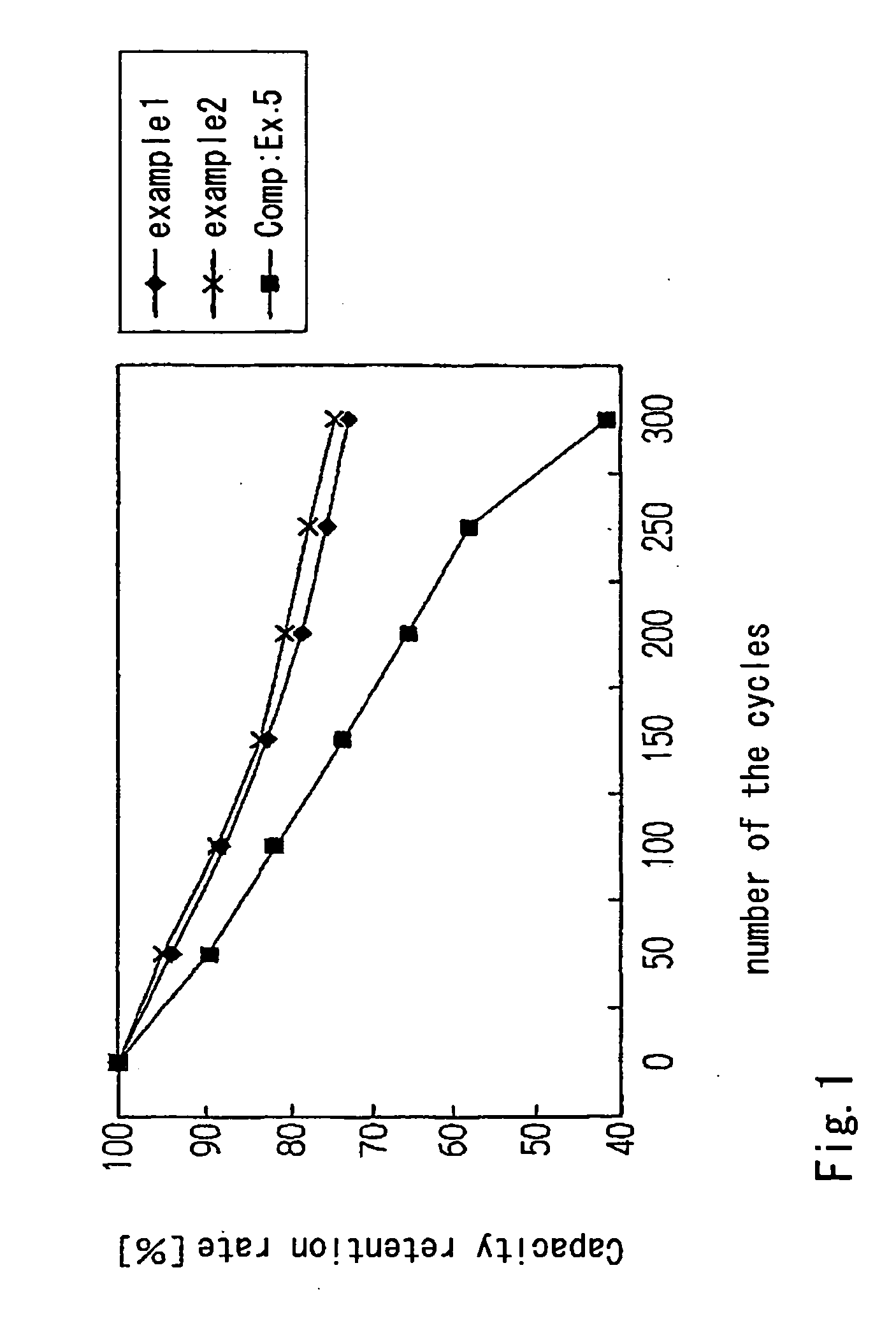Secondary cell
- Summary
- Abstract
- Description
- Claims
- Application Information
AI Technical Summary
Benefits of technology
Problems solved by technology
Method used
Image
Examples
example 1
[0042] For synthesizing spinel lithium manganate, lithium carbonate (Li.sub.2CO.sub.3) and electrolytic manganese dioxide (EMD) were used as starting source materials, and mixed together at a molar ratio of [Li] / [Mn]=1.05 / 2. Subsequently, the mixed powder was baked at 800 degrees C. in an oxygen-flow ambient.
[0043] For the lithium nickelate, nickel nitrate and lithium hydroxide were used as the nickel source and the lithium source, respectively, and a Co compound such as cobalt carbonate was used as an additive element. These materials were mixed at a desired ratio, followed by baking thereof at 750 degrees C. in an oxygen-flow ambient. Here, the molar ratio between the source materials was adjusted so that the composition obtained after the baking corresponded to LiNi.sub.0.8Co.sub.0.2O.sub.2.
[0044] Thereafter, lithium manganate, lithium nickelate, conductivity-providing agent and bismuth hydroxide were dry-mixed and uniformly dispersed in N-methyl-2-pyrolydene (NMP) in which PVDF ...
example 2
[0050] For synthesizing spinel lithium manganate, lithium carbonate (Li.sub.2CO.sub.3), electrolytic manganese dioxide (EMD) and bismuth oxide were used as starting source materials, and mixed together at a molar ratio of [Li] / [Mn] / [Bj]=1.05 / 2 / 0.05. Subsequently, the mixed powder was baked at 800 degrees C. in an oxygen-flow ambient, thereby preparing Bi-added spinel lithium manganate.
[0051] The lithium nickelate was prepared similarly to example 1.
[0052] Thereafter, Bi-added lithium manganate, lithium nickelate and conductivity-providing agent were dry-mixed and uniformly dispersed in N-methyl-2-pyrolydene (NMP) in which PVDF was dissolved as a binder, thereby preparing a slurry. Subsequently, the slurry was applied onto an aluminum foil having a thickness of 25 .mu.m by coating, followed by evaporation of NMP to obtain a cathode sheet.
[0053] Here, the ratio between solid contents in the cathode was set at Bi-added lithium manganate: lithium nickelate: conductivity-providing agent:...
PUM
 Login to View More
Login to View More Abstract
Description
Claims
Application Information
 Login to View More
Login to View More - R&D
- Intellectual Property
- Life Sciences
- Materials
- Tech Scout
- Unparalleled Data Quality
- Higher Quality Content
- 60% Fewer Hallucinations
Browse by: Latest US Patents, China's latest patents, Technical Efficacy Thesaurus, Application Domain, Technology Topic, Popular Technical Reports.
© 2025 PatSnap. All rights reserved.Legal|Privacy policy|Modern Slavery Act Transparency Statement|Sitemap|About US| Contact US: help@patsnap.com

